A Visit to the House of the Mountain Gorillas
A trek through Bwindi Impenetrable National Park brings you up close and personal with an endangered gorilla population
It was 10:30 a.m. and we’d been climbing nearly straight up the side of a rainforested mountain in the Bwindi Impenetrable National Park in Uganda for about two hours. The guide stopped our group—seven of us, all with our own porters to carry our things, plus two guys with machetes to clear a path and two with machine guns in case of “aggressive jungle elephants,” they said. Then, in the exhausted hush, the guide let out a low, grumbling groan. Seconds later, that groan was loudly returned.
“It’s the gorilla call from the trackers,” he said. “We’re getting close now. Only about 100 more yards.” The trackers had been out since dawn, following paths of crushed foliage showing gorilla movement and radioing back to the guide throughout the morning to let us know where to go. The groaning communication was meant to keep in contact without the radios, letting us know where to go without scaring away the gorillas.
They were at our goal: a clearing in the forest where we’d find the Bitukura mountain gorilla family, 13 members strong, lounging between their daily migrations and foraging for food. We’d get an hour in the gorilla’s house to take pictures and soak it all in, then we’d head back to our starting point at the Ruhija trailhead.
Mountain gorillas, or silverbacks, are only found in three countries: Rwanda, Uganda and the Democratic Republic of Congo, and only in two forests—Bwindi, where we were, and the Virunga range of extinct volcanoes. The population is desperately endangered; only about 880 remain in the world. The eastern gorilla subspecies was first discovered in 1902 and almost immediately became a target for poachers who wanted to sell the fur and sometimes meat. Due to over-hunting, deforestation and disease, the population declined to about 250 in the late 1950s, when conservationists began an intense tracking program to try to save the remaining gorillas. Now that number is rising, thanks also in part to these gorilla treks, which began in the late 90s as a source of sustainable tourism. In 2010, a new census showed the population had increased to 480 gorillas; that number has nearly doubled since.
My porter, Thotelomy, was worried about me. I’d been struggling for the last hour to climb the steep, freshly cut path at about 7,000 feet elevation, and now that we were mostly there I wasn’t sure if I’d make it. He and the other porters were invaluable to the trip, carrying all our bags, pulling us up one by one from muddy ledge to muddy ledge, and making sure we safely made it through the trek. It’s not a stretch to say that without Thotelomy, I wouldn’t have made it all the way to the gorillas.
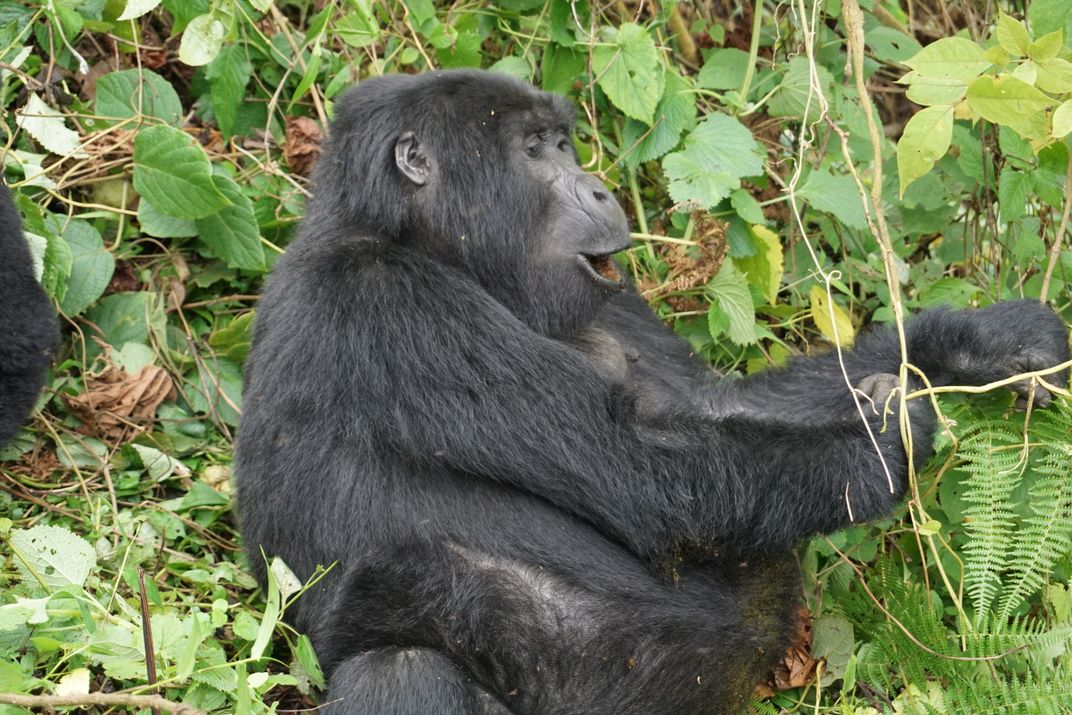
The porters themselves are part of the sustainable tourism approach to gorilla trekking. Francis Kiwanuka, our driver and guide from locally run Volcanoes Safaris, told Smithsonian.com that many are former poachers who realized their income source would dry up if the population continued to dwindle. So the national park offered them more money to be porters than they’d make poaching—and now they're active participants in gorilla conservation. Kiwanuka mentioned some are even pseudo-spies for the national park now, reporting poachers to the authorities to stop the act before it happens.
About 100 yards later we found the trackers, a young man and woman, both carrying machetes, who told us to leave our packs and porters and follow them around some trees to the gorillas’ doorstep. It was only about 10 steps until we were flanked: one male silverback on the left, sitting in a swarm of bugs and munching on some leaves, and a female on the right up in a tree, observing. A little further in and we noticed a baby girl hanging from the tree with her mother. Her name was Gift—decided so because the first child of the mother gorilla had died, and Gift survived. As we watched, Gift and her mother climbed down the tree to settle in a clearing at the base where Gift could take delicious advantage of a bamboo shoot sticking out of the forest floor. On our other side, the dominant male gorilla sat in a different spot, eating leaves and continuously passing gas.
All told, we saw eight of the 13 gorillas in the Bitukura family. And although we were all enamored watching Gift tumble off her mother’s back only to get scooped back up into her warm embrace, or seeing the dominant male flip upside-down to stare at us from a new angle, the gorillas didn’t seem to care one bit that we were there. It’s part of the sustainable tourism process as well—this group is one of the select families habituated to human presence, so they don’t run off when visitors appear. (Other family groupings are left completely wild.) As Kiwanuka said, “people are just part of their scenery.” The habituation allows tourists to continue to come see the gorillas, which brings money into the community; the trekking permits and all costs for the porters and guides goes right back to the locals working those jobs. Annual revenue from gorilla tourism is about $3 million, with an additional $17 million coming from hotels and restaurants used by the tourists.
Our hour of gorilla time went too quickly. Thankfully we didn’t head back the way we came—another two hours down an equally steep hill would have been way too tough, and the majority of our hike up was just searching for the gorillas. We could now take a more direct route, only 30 minutes back to the trailhead, where Francis was waiting to hear about our time with the majestic silverbacks.
/https://tf-cmsv2-smithsonianmag-media.s3.amazonaws.com/accounts/headshot/JenniferBillock.png)
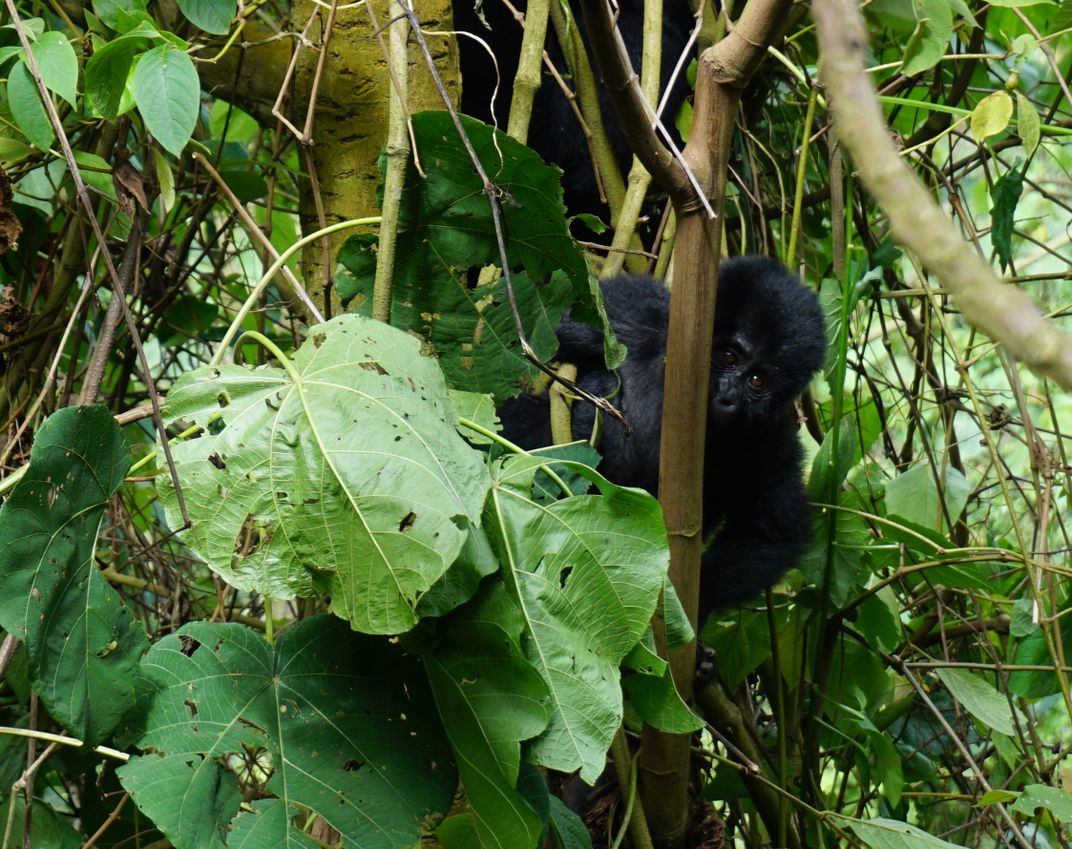
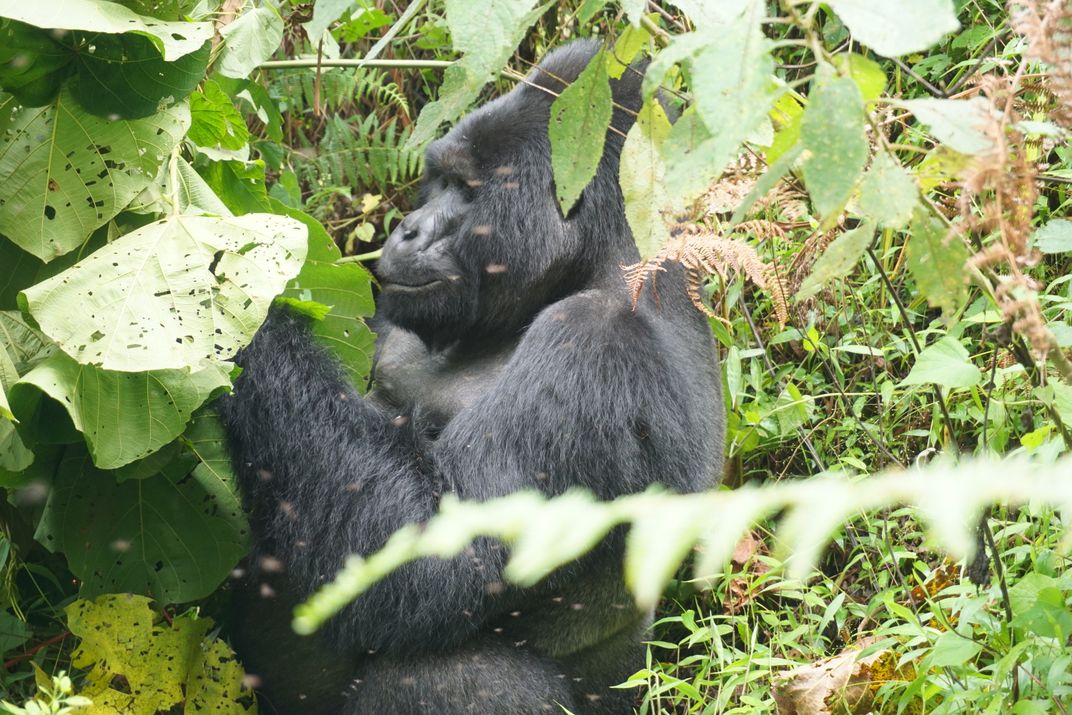
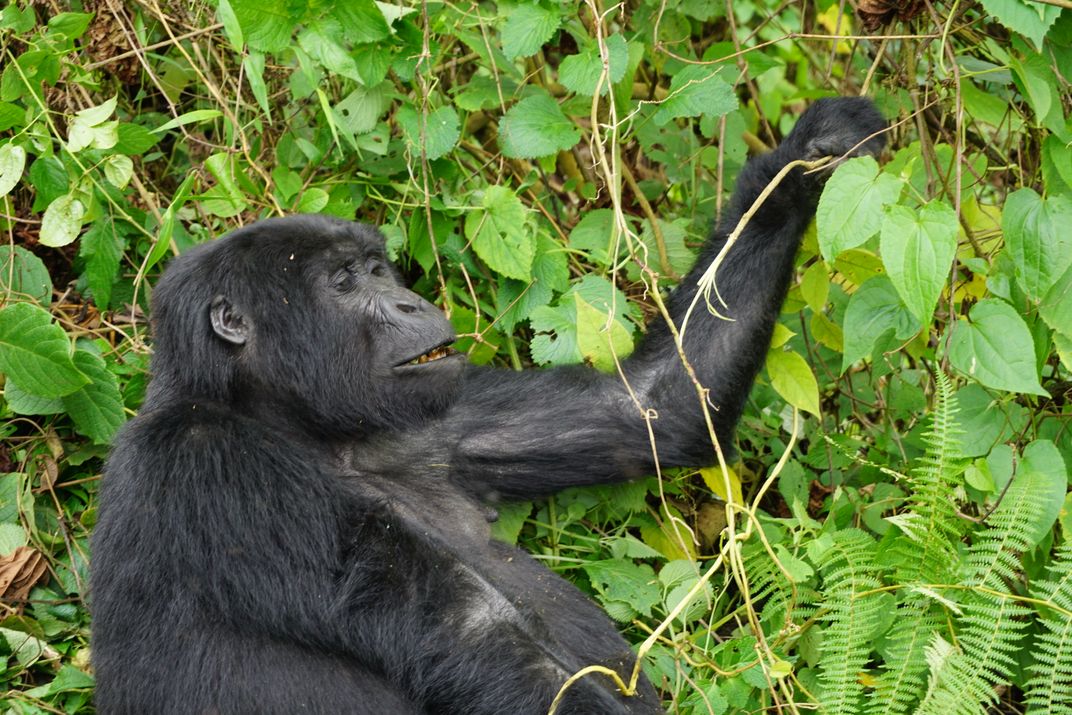
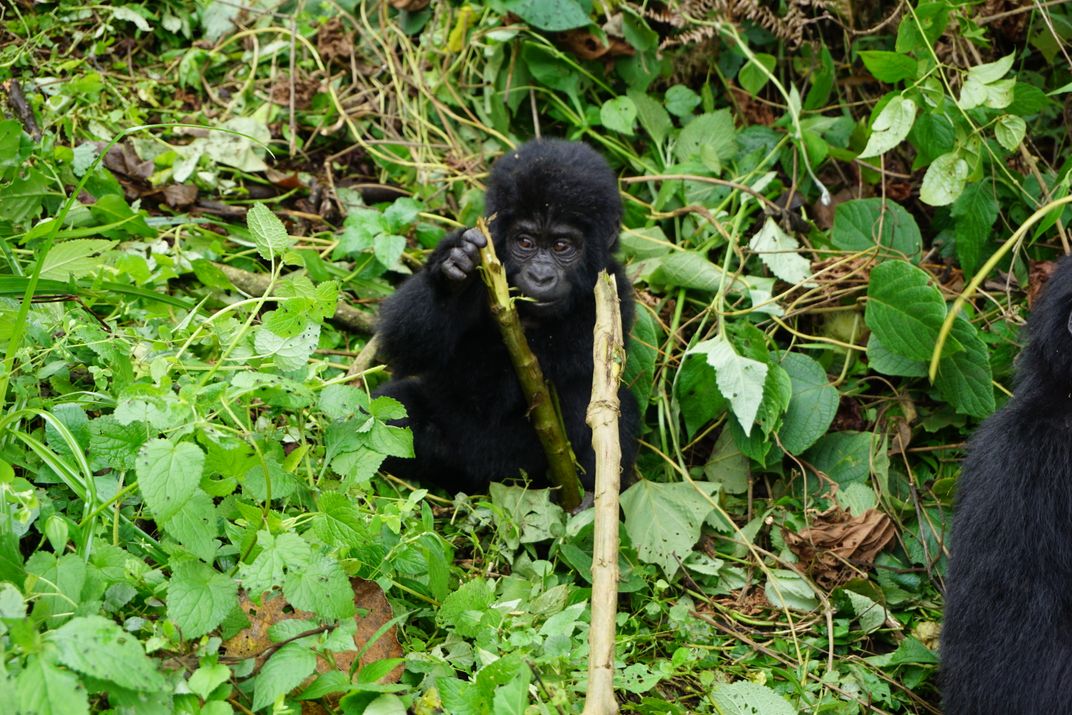
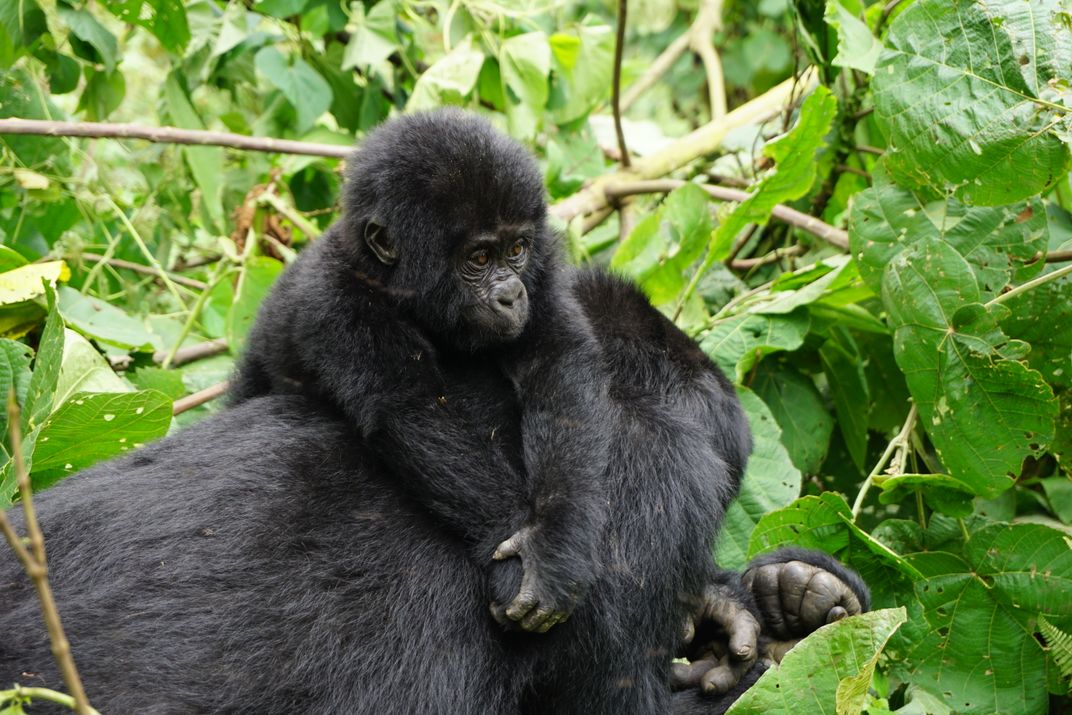
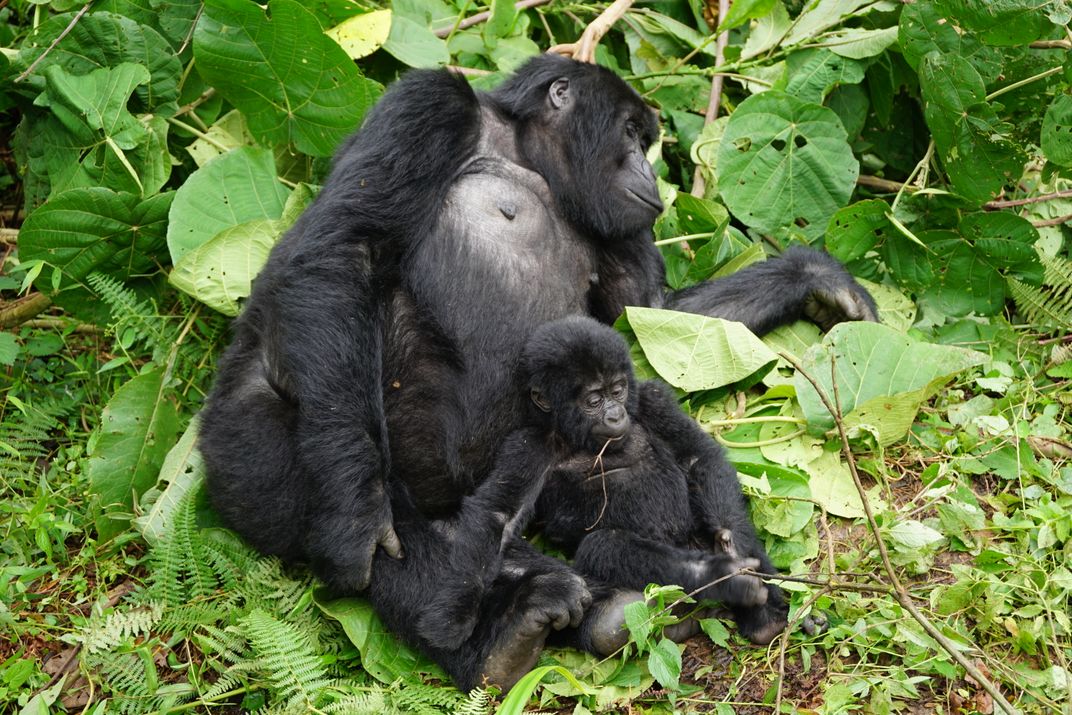
/https://tf-cmsv2-smithsonianmag-media.s3.amazonaws.com/accounts/headshot/JenniferBillock.png)